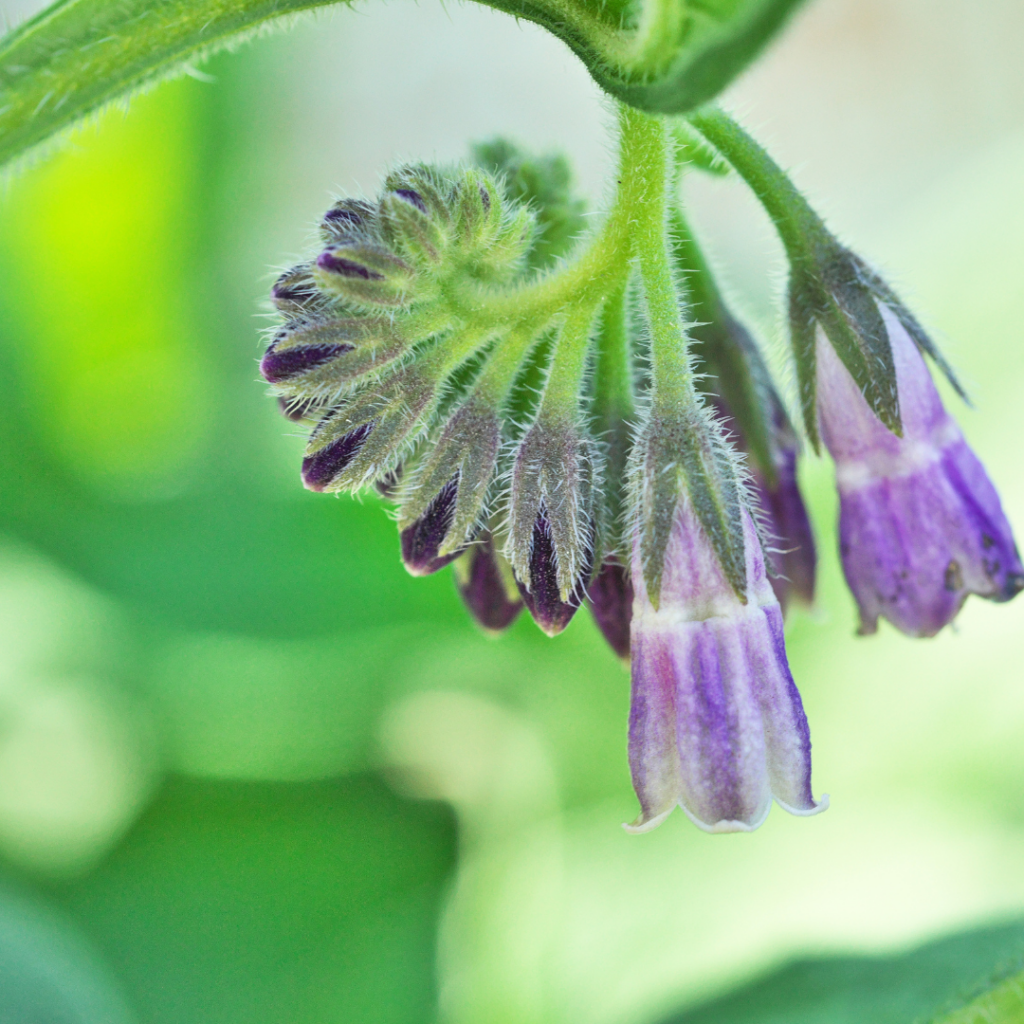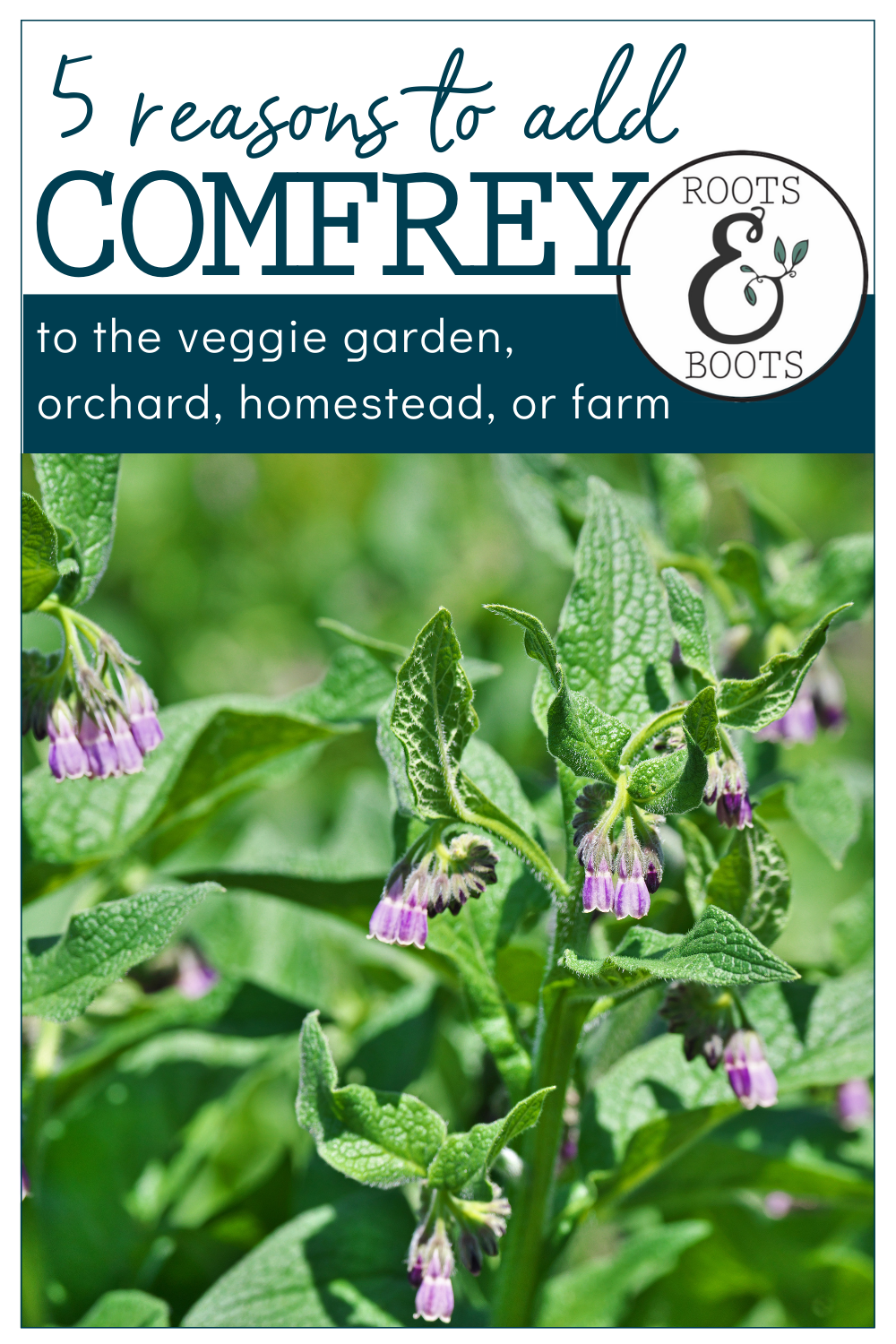5 Reasons to Add Comfrey to the Vegetable Garden or Orchard

Plan your best garden with simple, step-by-step instructions!
This post may contain affiliate links, which means I make a small commission at no extra cost to you.
See my full disclosure here.
Comfrey offers a host of benefits to the garden, orchard, homestead, or farm. From attracting pollinators to providing nutrient-rich mulch, here are 5 reasons to add comfrey to the vegetable garden or orchard.
Check out this brief video of the comfrey in my own orchard. Can’t see the video? Click here to watch.
5 Reasons to Add Comfrey to the Vegetable Garden or Orchard
1. Accumulator plant
Comfrey has a long tap root which draws nutrients from deep down in the soil, bringing those nutrients up to the top layers of soil to benefit tree roots. This makes comfrey an excellent addition to the fruit tree guild.
2. Pollinator plant
Bees love comfrey! Many fruit trees and vegetables benefit from pollination, which makes it important to attract bees to the garden and orchard. To attract bees and other pollinators, simply allow your comfrey plants to flower.
3. Livestock food
Comfrey grows like a beast. On my farm, we cut it down at least three times during the growing season and sometimes up to five or six times. We feed the comfrey cuttings to our pigs, which helps to reduce our dependence on purchased feed.
Comfrey can also be fed to sheep, poultry, and cows. This alone makes a fantastic reason to add comfrey to the vegetable garden or orchard, especially on a homestead or farm.

4. Garden mulch
Comfrey leaves make wonderful garden mulch! Spread the leaves over the soil in your garden, around your plants. Or add leaves directly to your compost pile, where they will break down and add nutrients to the finished compost.
5. Medicinal value
Comfrey offers a natural way to soothe muscle and joint pain, help to repair bones and skin wounds, and calm skin irritations. This is not my area of expertise, but you can find plenty of information with a quick online search.
Warning
I have learned the hard way about two types of comfrey. One spreads quite aggressively, and the other does not.
Please learn from my mistake! I recommend planting Bocking 14 comfrey, which has sterile seeds and will not reproduce like wildfire. If you want to propagate your Bocking 14 to create more plants, you can do so from root cuttings.
No matter which type of comfrey you plant, be aware that once comfrey is growing in any given area, it becomes almost impossible to remove. So give lots of thought to where you locate your comfrey.
Have you added comfrey to your veggie garden or orchard?

Sign up NOW for my best tips delivered weekly to your inbox!
You’ll also get instant access to my library of free ebooks and resources.







Leave a Comment